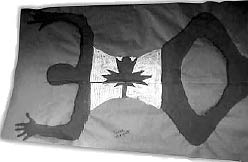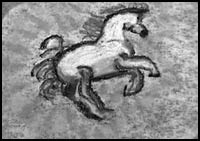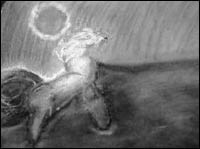Giving Students Roots and Wingsby Katharine Childs Introduction I am an adult educator with over thirty years of experience in the teaching profession. For the past twenty years I have been a Language Arts teacher and an academic mentor working with adults enrolled in a full-time academic high school program in the province of Quebec. Our student population could best be described as marginalized and generally disaffected; many happen to be young adults from sixteen to nineteen years of age who have previously been unsuccessful in school. A growing number of students have few academic skills; many of them cannot read well and see no reason to improve their skills. For the majority of these people, our school is their last chance at getting a high school diploma – and perhaps qualifying for a job or further training. The Changing Landscape of Adult EducationOver the past seven or eight years, the demographics have drastically changed in adult education in Quebec, causing our adult education centre to experience a number of significant and dramatic changes in its learning culture and in the way that we work with the adults who study with us. The fact that much of our student population is now between the ages of sixteen and nineteen years old has had profound ramifications on our entire environment – changes which have necessitated different approaches to teaching and learning in the centre. Although many of these younger students come to us with a large number of their required courses completed, a growing percentage of them require an additional three or more years of full-time study to accomplish their stated goal of completing their high school education. Many of them lack positive self-images, demonstrating limited curiosity. They have difficulty in reading and writing, in managing their time, in goal-setting and in persevering at their work. These students are passive and highly dependent upon their teachers. For many, progress is slow, and academic success almost non-existent. Conventional (‘prescriptive’) academic courses – even those designed especially for adults – have not been able to address these issues. To counterbalance this, I have tried to teach by building upon students’ individual successes and utilizing their embodied knowledge in an effort to enhance learning that is individually more meaningful and responsive. The problem: Secondary III EnglishI first wondered about certain attitudes towards learning when I noticed that students placed in our English Secondary Level III course seemed to be largely unsuccessful. Those who did pass did so with low grades and only after long periods of time. Even worse – they did it with little, if any, enthusiasm. Many students dropped out after completing one section of the course. Some simply left, claiming the class was too large, the work too hard or that they had better things to do with their time. Others stayed, sporadically attending and rarely handing in work – seemingly defeated by the class itself. Something was definitely wrong. School records provided data that convinced me that there were problems with this course. Most of the young adults transferring directly into our system from the local high school were placed into this program because of previously completed coursework. Their reading and writing skills were quite poor, but most had already attended and passed the Secondary II Language Arts course. This meant that the majority of the Secondary III class members were between the ages of sixteen and eighteen, the youngest adults in the building. There was a high concentration of young males in this course (over 69 per cent – or sixteen of twenty-three students). After testing, an equally high percentage of these students seemed to be kinesthetic and visual learners – right-brained individuals (MacDonald 2001). Most students took more than five times as long to complete this course than any other course given in our centre – an average total of 800 hours to complete a 150-hour course. Only 16 per cent – four students out of twenty-three – completed the course at all (Tannahill 2001). Faced with hard evidence that the existing course was problematic, I probed my most deeply held beliefs about the purpose of education – formal or otherwise – and critically examined the particular place of literacy and cur riculum within that larger purpose. I asked myself leading questions: “Are skills, knowledge and literacy inextricably bound together – and how so?”, “What kind of knowledge/skills will my students need to get jobs or continue their training?” and “What types of knowledge best enable us to care for ourselves, one another and the world that surrounds us?” Faced with hard evidence that the existing course was problematic,
It occurred to me that the tendency many of us have to identify education exclusively with reading and writing has created a limiting imbalance in most of our schools: the majority of the adult students that I see regularly suffer from this imbalance. I wanted to find different tools that would allow my learners to become confident and successful. In order for them to be able to express themselves in different ways, I felt my students needed tools that were more flexible/less confining than the traditional ones, that would enable them to express what they apparently were incapable of conveying in conventional language – or in conventional ways. The research question
I wanted to create the kind of classroom atmosphere that would be responsive to and that would embrace the gifts and talents of every person while fostering personal and academic growth. This led to the larger question: “What do I consider and accept as ‘literacy’ and ‘learning’ – and what does that entail in terms of personal (and professional) growth for both me and my students?” Working from the premise that when one discovers and experiences knowledge and new meanings through interactions between the Self and the world, the whole self – body, mind, and heart – is affected, I instinctively turned to the arts as a possible way of providing opportunities for connection, and for listening and learning from each other and ourselves. As a teacher-researcher interested in self-study and reflective practice, I have continually employed a number of arts-based techniques and various artistic representations in my own research, and am familiar with educational research in this field. Much of what I believe about art and the creative process is summed up by Rhoda Kellogg’s statement that art is “a visual necessity for achieving mental stability.” A vast potential for personal discovery exists when we ground our learning in the artistic experience and process – when we learn to trust in the creative process itself and embrace the relationships with the products that emerge. This is borne out by a number of influential researchers who see art as literacy – a reading and writing of texts – and as a vehicle for personal causation and growth (Greene 2001, 1995, 1978; Eisner 1991; McNiff 1998a, 1998b). This is not easy for anyone who has been schooled in a traditional system where there is a marked disregard for anything that cannot be directly and immediately perceived – where art is frequently regarded as ‘frivolous’ and unnecessary to a solid education. It is even more difficult for students who are different, who have not been successful in school but wish to attain an education. I was all the more determined to offer classes of this nature. In addition, I realized that this issue of literacy was closely aligned with my students’ self-esteem, with their valuation and validation within the larger educational system. As a teacher, I also realized that this issue struck close to home: if I believed in the principles of self-directed lifelong learning, I would need to become truly more responsive to all the adults I work with. I came to the conclusion that helping my learners to acquire the roots of belonging and ‘mattering’, and the wings of individual potential and freedom should be at the centre of everything that I do as an educator. If employing slightly different approaches and techniques could help my students learn the information processing skills they needed to become more successful with certain types of printed material, I was willing to try them. Art, our class discovered, meant taking action
I had just put together a tentative outline of the new course when one of my most ‘resistant’ students – a personable and bright man who I shall call Jon – began to work on improving his reading and writing using the creative arts and these arts-based techniques. What I learned from working with him made me realize the tremendous power and promise that working with art and various types of media possesses for significant learning. I found it to be a wonderful tool that promoted self-awareness and selfex pression – two of the ingredients that aid self-confidence and lead to personal success/personal causation. I also discovered that this method was an effective way to get disaffected secondary students to ‘read’ and ‘write’ different texts. Since Jon, there have been many other students who have completed these courses, many of them following his lead by using narrative pieces, coupling them with poetry and image texts as a way of articulating their knowledge and helping others to connect to their experiences. The high quality of the work that these students have produced and the soundness of their learning has convinced me that allowing students the freedom and the responsibility to determine what and how they learn is worth ‘bending the rules’, of trying something new. Because of this, our new three - part Secondary III program with its initial focus on using arts-based techniques as a form of literacy is now firmly established in our adult education centre.
|




